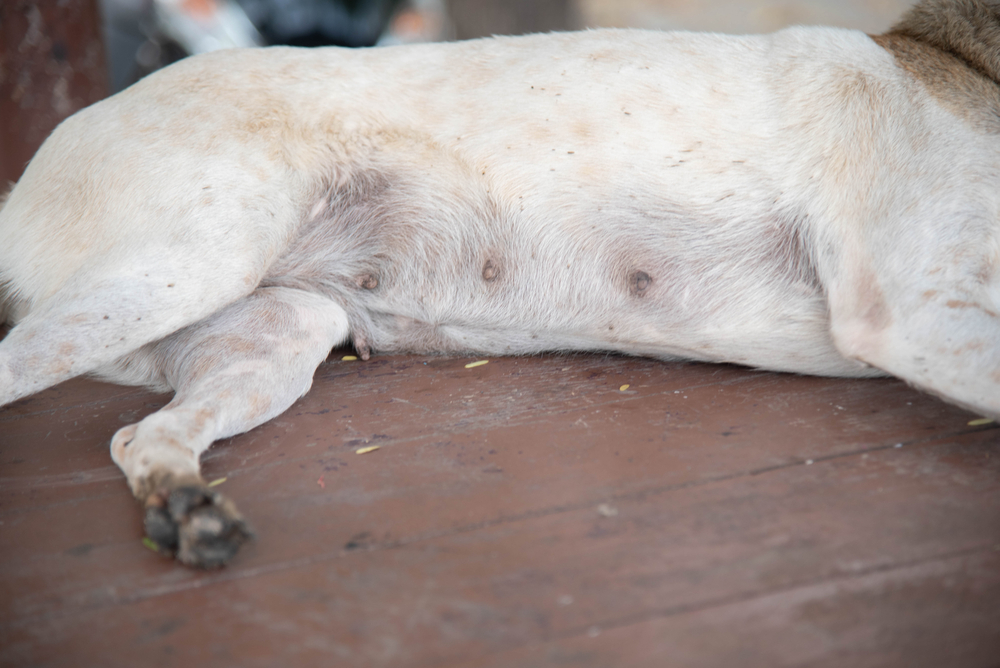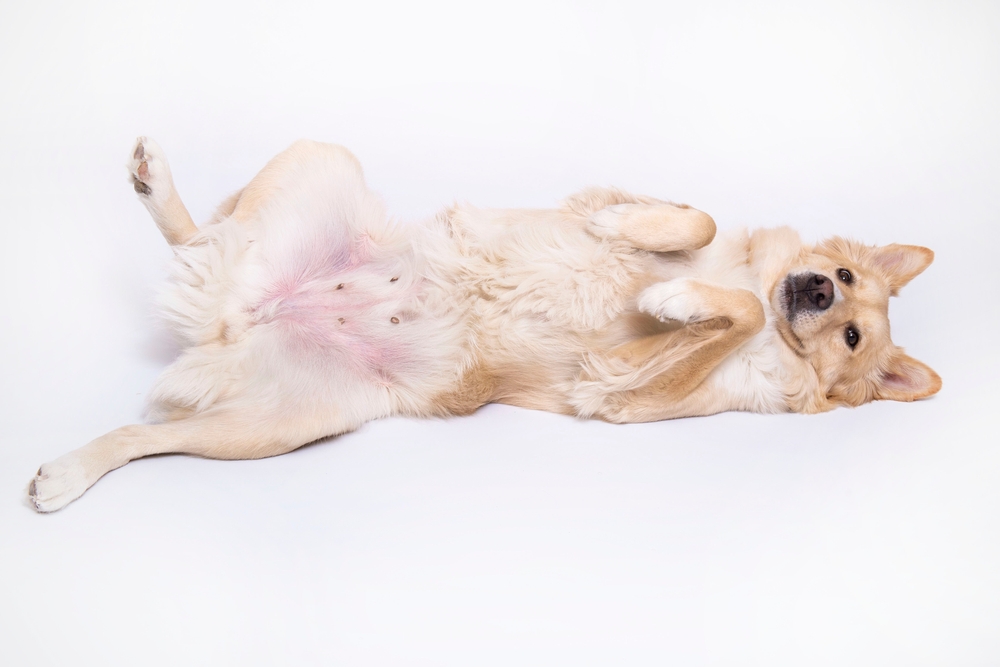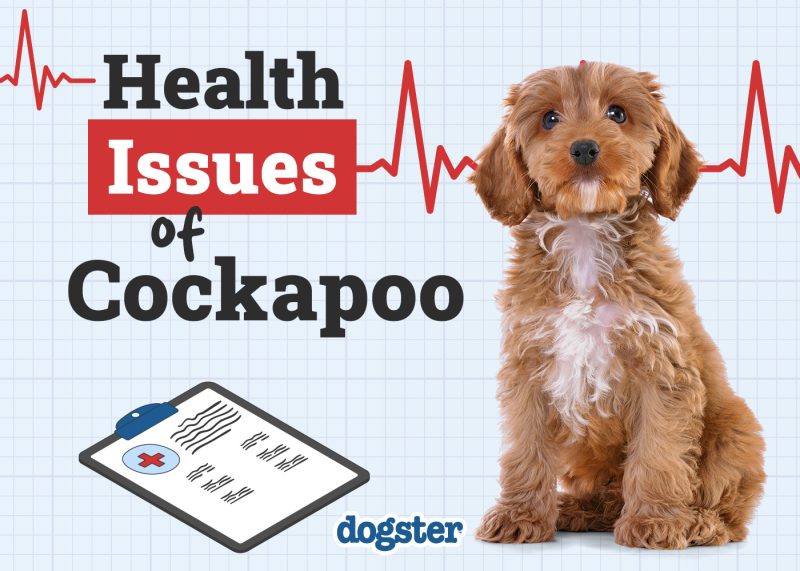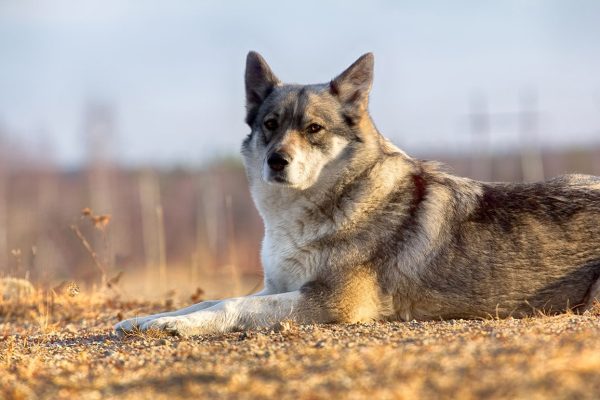In this article
Most dogs have between eight and 10 nipples, but they can have more or less, depending on the gender, size, and breed. Large dogs sometimes have more, while small dogs sometimes have fewer. This difference makes sense, as big dogs tend to have more puppies. They also just have more room on their underside for more nipples.
That said, the number of nipples can vary from dog to dog, too. One German Shepherd may have eight, while another will have 10. Since normally nipples come in pairs, most dogs have an even number. Sometimes, though, the upper pair of nipples can be underdeveloped and may not actually produce milk, despite often being “counted” as nipples. Also, supernumerary or unpaired nipples may occur.
Both male and female dogs have nipples, just like humans. The nipples begin developing before the dog’s sexual differentiation and reproductive organs begin to develop in the womb. Only female dogs can lactate, though.

What Are Dog Nipples Supposed to Look Like?

A dog’s nipples are often relatively small and unassuming. However, a female’s nipples may swell when nursing. This swelling helps the puppies find them easier, which promotes nursing. The nipples are typically the color of the dog’s skin, though they can be pigmented in a different color. There is a large range of normal.
If you’re worried about a particular nipple, it is best to compare it to the others. However, upper nipples tend to be smaller and may even be underdeveloped. This trait isn’t worrisome, though it is something to keep in mind if you’re breeding your canine.
Sometimes, spayed dogs will have flat or even inverted nipples due to lack of hormones. Of course, since the dog won’t be nursing any puppies, this isn’t troublesome.
There are several issues that can crop up in the nipples. For instance, lactating dogs can develop mastitis, which is an infection of the mammary gland (the gland that produces milk).1 Usually, infections occur when the dog gets a clogged duct, but trauma or milk accumulation can also be the culprit. After the milk has been sitting there for a while, bacteria can fester and lead to infection. Antibiotics are necessary, and commonly, the mother will refuse to nurse the puppies due to the pain and discomfort. In very rare cases, non-nursing females and even males can also develop mastitis after a hormone imbalance and cause abnormal milk production known as galactorrhea.
Tumors can cause nipple swelling, and any dog can develop mammary gland tumors. However, they are most common in intact females. If you notice anything strange with your dog’s nipple, you should contact your vet right away. Both of these conditions can be treated effectively. However, quick treatment is necessary to reduce the risk of complications.
If you need to speak with a vet but can't get to one, head over to PangoVet. It's our online service where you can talk to a vet online and get the advice you need for your pet — all at an affordable price!
Do Female and Male Dogs Have the Same Number of Nipples?
A dog’s sex has no bearing on the number of nipples they have. Nipples begin developing on a puppy embryo before gender differentiation. Therefore, even males will have nipples, even if the canine will never use them. Spayed females also have nipples, though they may be smaller and more like a male’s due to hormonal changes.
Of course, different breeds of dogs have different numbers of nipples, and dogs in the same breed have some level of variance, too.


Why Do Dogs Have So Many Nipples?
Dogs have a large number of nipples because they have large litters. Humans typically only have a single baby, though twins, triplets, etc., are also possible. Even so, humans don’t need eight different nipples like a dog does. Many primates, horses, and other animals with small litters also only have one or two nipples.
Animals that have large litters, such as mice, cats, and dogs, have more nipples to feed all their offspring. It depends on the number of babies that the mother needs to nurse at one time.
Still, it is possible for female dogs to have more puppies than nipples. Dogs with only eight nipples may have 10 puppies, for instance. Or, a dog with 10 nipples may have 11 puppies. In these cases, it is still possible for the mother dog to produce enough milk. A dog’s body doesn’t produce a set amount of milk per nipple. Instead, it works on supply and demand. The more milk the puppies remove, the more milk the mother will produce (this also enables her body to adjust based on the puppies’ ages and weaning status).
Therefore, as long as all the puppies are allowed to nurse, and the mother has appropriate nutrition, she will typically produce enough milk. Sometimes, human intervention is needed here, though. For example, smaller puppies may not be allowed to nurse because of the competition from their stronger littermates, especially if there aren’t enough spots. The human caregiver will need to ensure that all the puppies get a chance to eat—with preferably no puppy always going last.
When the puppies reach a few weeks old, there is less worry about the puppies not getting enough milk. At this point, they aren’t so helpless.

What Factors Affect How Many Nipples a Dog Has?
The size does have some effect. Large dogs tend to have more nipples, while small dogs have fewer. There is plenty of difference between individual dogs, though. Most Labrador Retrievers will have eight to 10 nipples, but some may have six or 12. Puppies in the same litter may even have different numbers of nipples.
Likely, genetics play a role in the number of nipples. However, scientists haven’t located a particular gene that is in play, so environmental factors from inside the womb may also affect the count.
Generally, most dogs do just fine no matter how many nipples they have. That said, female dogs with particularly few nipples may not be the best breeding dogs. After all, they may have trouble feeding all their puppies, and you would have to perform interventions to ensure that all the puppies receive enough food. While it isn’t impossible for these dogs to breed, it isn’t ideal.
Can Dogs Have an Odd Number of Nipples?
It is possible for a dog to have an odd number of nipples. However, this is quite rare. Usually, a dog’s nipples are symmetrical like the rest of the body. Problems can occur during development that can lead to one nipple not developing, though.
Usually, this isn’t a reason to be concerned. Many dogs have odd numbers of nipples and never have any negative effects. It may just be something to keep in mind if you decide to breed the dog, though.

Conclusion
Most dogs have eight to 10 nipples. There are a lot of variances between breeds and individual dogs, though. Technically, a dog can have any reasonable number of nipples, and it is still considered normal. Dogs within the same litter can have different numbers of nipples, and some dogs even have odd numbers (or nipples in weird places).
Either way, as long as the nipples themselves seem healthy, the number isn’t a huge concern. Mother dogs can still produce enough milk for their puppies, even if they have more puppies than nipples. However, human intervention may be necessary to make sure all the puppies get enough to eat if the dog doesn’t have enough nipples to go around.
Featured Image Credit: Natalia Duryagina, Shutterstock



















